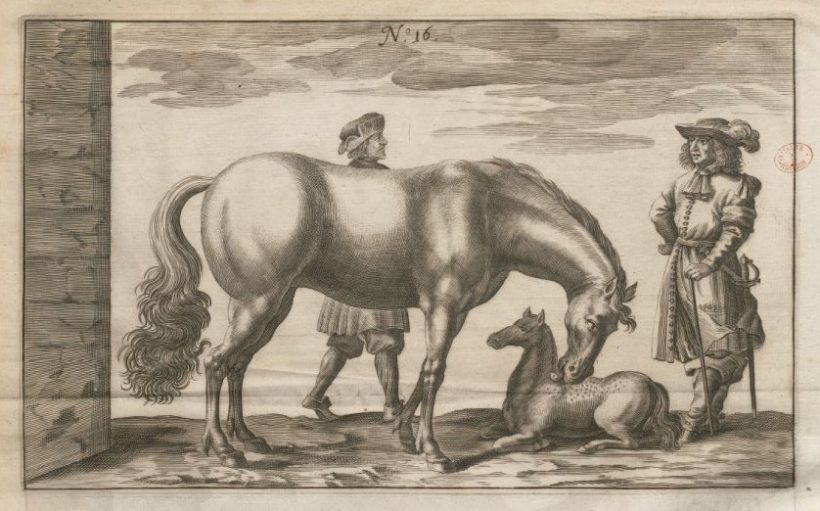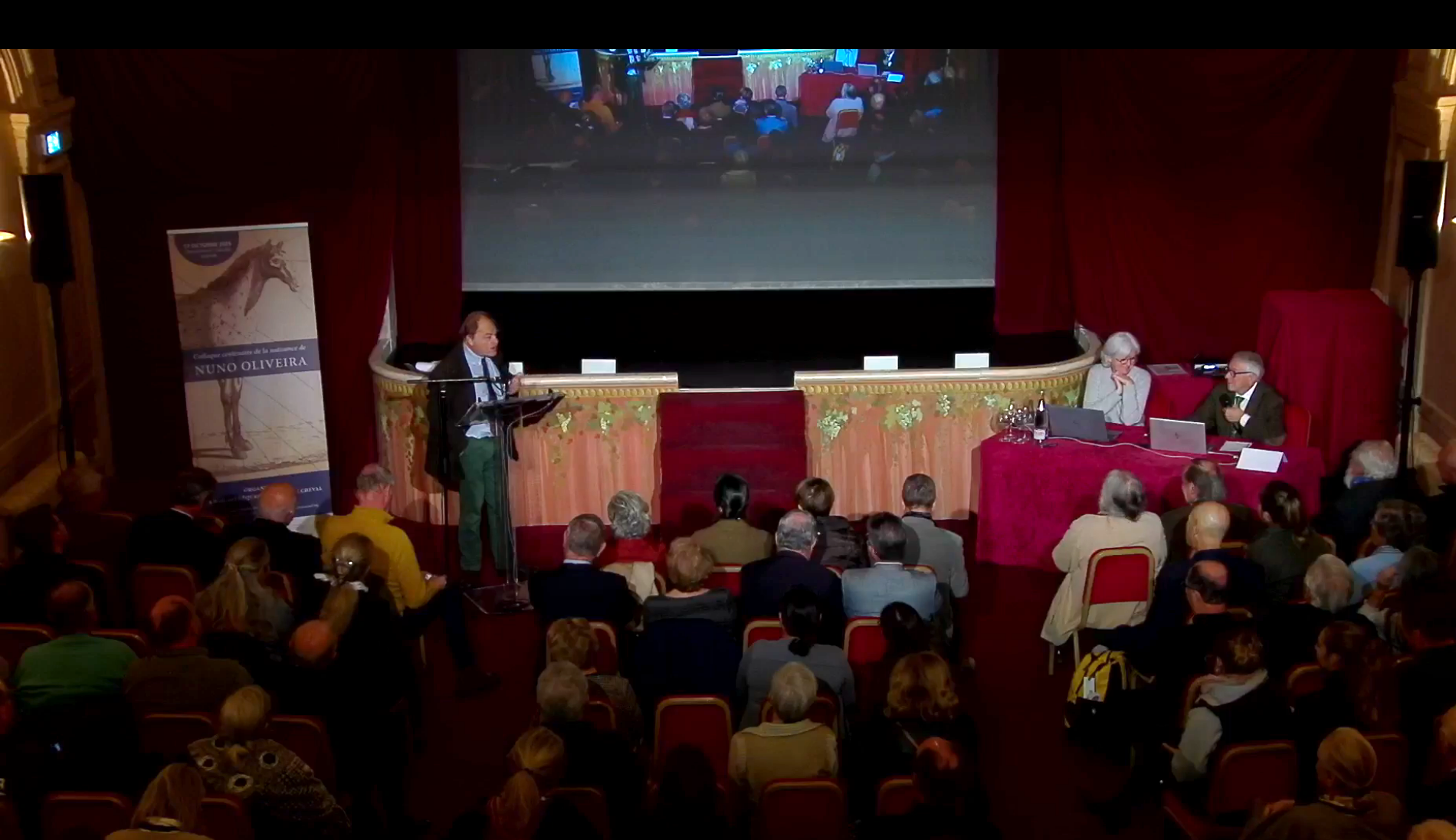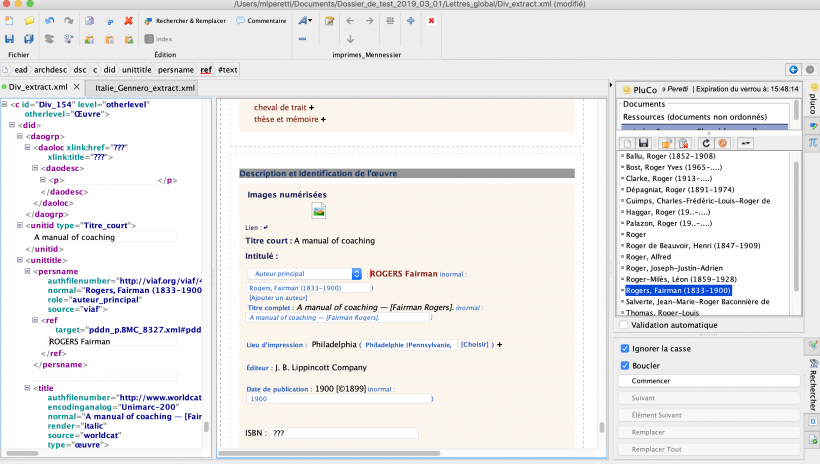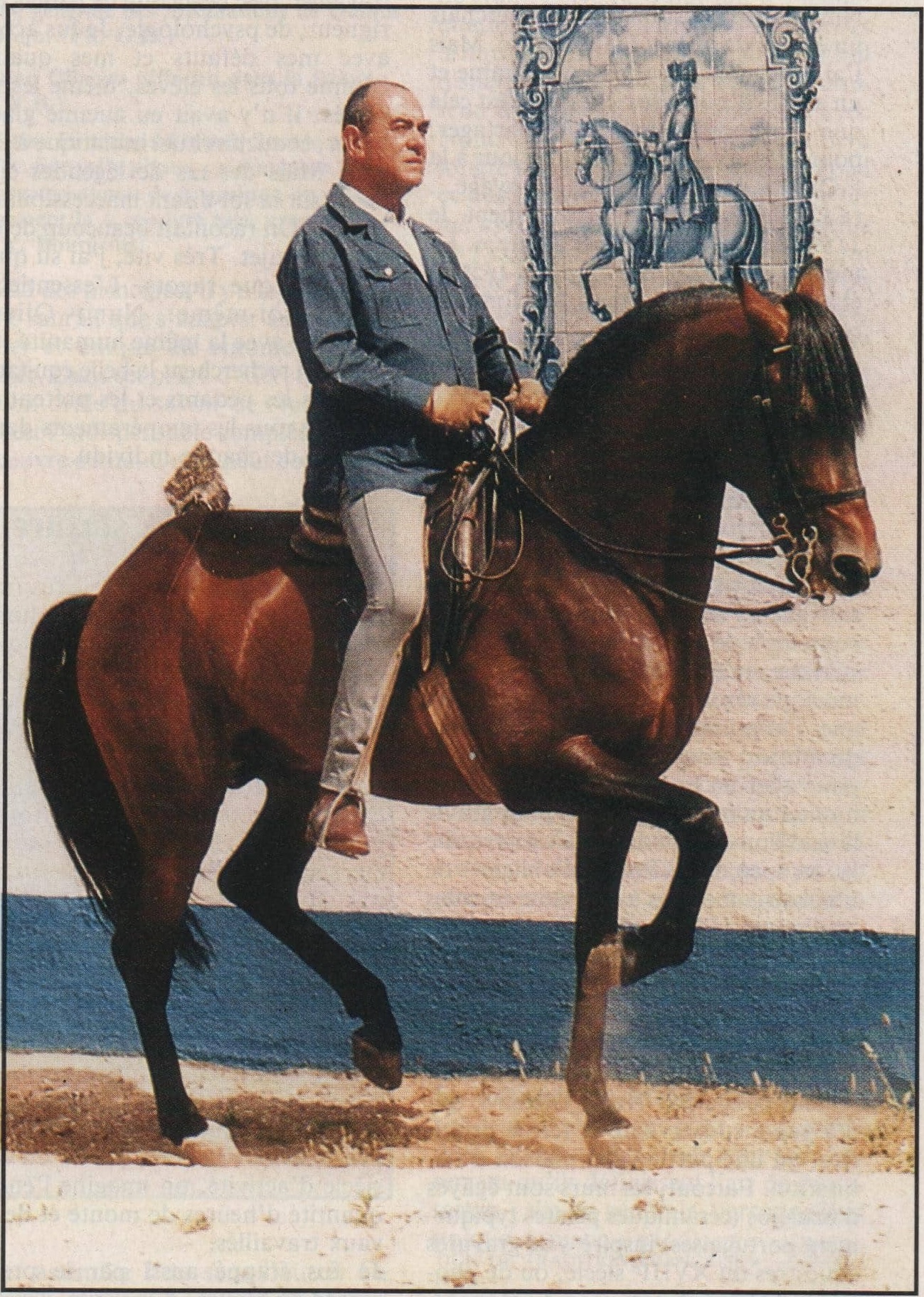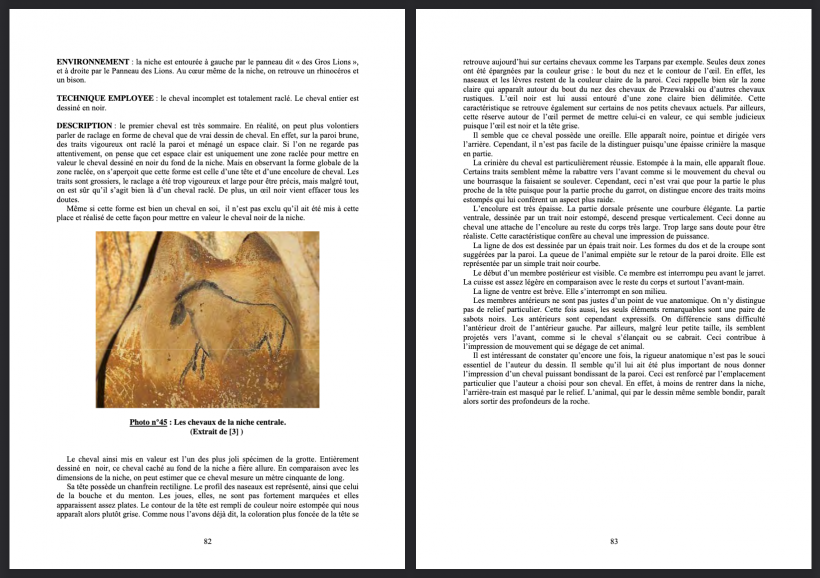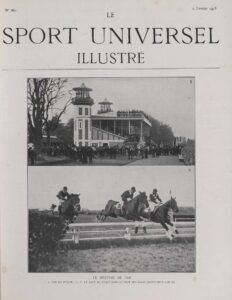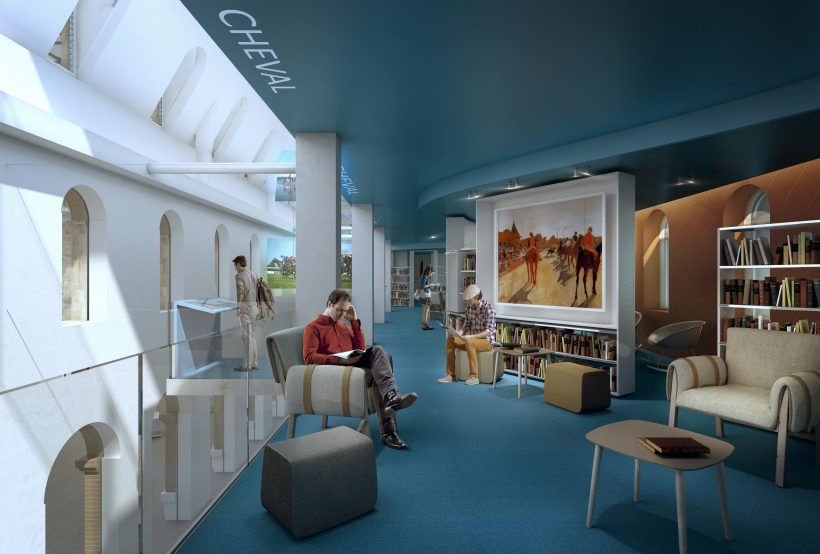
The horse at the heart of the futuristic “Médiathèque de Deauville”
On October 11, 2019, Philippe Augier, Mayor of Deauville and promoter of the so-called “Médiathèque Les Franciscaines”, signed a contract with Éric Hoyeau, President of Arqana, one of the world's leading racehorse auction agencies, whose ties to Deauville are as obvious as they are historic, under which the operator undertook to provide financial support for the “horse” department of what promises to be an ambitious cultural centre.
Take the opportunity to discover this avant-garde space through a guided tour of the construction site as well as this interview.
Nobody would have ever thought that in less than six years, the historic site of the orphanage, run for more than a century by the Congregation of the Sisters of the Franciscan Order, would become this cathedral 2.0 of sharing the knowledge and passions of the station.
X.L.: Tell us about this Media Library project, which will open in June 2020.
Ph. A.: In June 2020, the city of Deauville will open much more than a media library, it is in fact a real place of permanent cultural life.
This is a global, very ambitious project that aims to connect a media library, a museum and a performance hall in the same cultural facility. This pooling of cultural functions will be physical, digital and, above all, embodied by an abundant and completely transversal program.
The collections of the museum and the media library will be brought together in spaces for the emancipated discovery and sharing of traditional codes. A free and interactive tour will be offered to visitors in an inventive cultural spirit. The purpose of this place is to invite the different art forms to meet and nourish each other.
Music and literature, painting and poetry, digital creation and photography, songs and cinema... are some of the combinations that Les Franciscaines propose to explore. This establishment of nearly 6.500 m² will come to life in the former Franciscan convent, the name of which will be kept.
X.L.: How did the idea come about? How long does it take between the idea and the inauguration? The budget?
Ph. A.: For nearly 20 years, “culture” has been the main attraction chosen by the city to embody its identity and promote its territory. This strategy is reflected in nearly 6 festivals (literary, cinema, music, photography, etc.). And it is with this in mind that the city wanted to create a facility dedicated to cultural life. A first project for a media library and performance hall was suspended in 2008 due to the global economic crisis, and it was in 2012/2013 that the municipality re-engaged in this major project that we are proud to see completed in a few months.
- Programming study in 2013
- Architectural competition in 2014
- Designation of the winner in 2015 (Cabinet Moatti et Rivière)
- Start of construction in February 2018
- Inauguration scheduled for June 13, 2020
X.L.: Funding? Stakeholders?
Ph. A.:
Investment:
- €4 million in acquisition costs
- 16 million for the works
- $3 million for studies costs
Public subsidies:
- Normandy Regional Council: 4 million
- Calvados Departmental Council: 2 million
- State: 2 million
Private sponsorship: €1 million (Arqana, Crédit Agricole Normandie, Fondation du Patrimoine, Engie, EDF, Veolia and others to come).
X.L.: What is the goal?
Ph. A.: Patrons and partners are keen to support such a project, which is unfortunately rare in our type of territory. You have to be ambitious and very proactive to carry out a project of this scale in a village such as Deauville.
It is a cultural project and above all a structuring project for our territory well beyond the borders of Deauville. The stakes are numerous: economic, touristic, cultural and social.
X.L.: Who will be in charge? Who will promote it? Tell us about the team in charge.
Ph.A.: In order to respect the multidisciplinary nature of the institution, the cultural management team is also multidisciplinary: there will be a Director of the Media Library, a Director of the Museum and a Cultural Director, and they will all be brought together under a General Management.
This team will be staffed by specialised staff (in the management of works, the administration of collections, etc.) and cross-functional staff for all matters relating to reception and mediation functions.
X.L.: Who will the target of the Media library?
Ph. A.: The objective of “Les Franciscaines” is to attract, in addition to the permanent inhabitants of course, a destination audience interested in culture, exhibitions, shows, conferences, meetings, but also to federate an audience of subscribers that we call the Friendsciscaines who will “live” the establishment several times a week and a month. Schools and young people will also be given priority with customized offers. With regard to the “horse” and “Deauville” heritage collections, researchers will also be welcome.
X.L.: What “tool” are we talking about (exhibition space, storage space, technical device, digital device, etc.)?
Ph. A.: The public will have access to semi-permanent exhibition spaces, temporary exhibition spaces, creativity rooms, Fab Labs, performance halls, consultation areas, shops and reception areas.
The book stores, the reserves, the processing areas will make it possible to work on the collections and prepare them for consultation.
A digital library developed with the BNF (Bibliothèque Nationale de France) will provide permanent access to resources. There are very few libraries in France that benefit from this partnership development and we are very proud to have it.
This has been made possible thanks to the recognition of our Horse Fund, a fund of national interest.
X.L.: What will be the place of the horse in general? In volume? In “richness”?
Ph. A.: If I understand correctly, at Les Franciscaines we are going to cover a lot about the horse, which includes many areas of interest, including a digital museum, a magnificent Hamburg collection and numerous museum collections composed of paintings, graphic arts and art objects from the nineteenth and twentieth centuries, bringing together works by internationally renowned artists (Monet, Courbet, Boudin, Dufé, Signac...) regularly enriched by acquisitions by the City of Deauville and the deposit of the “Painting in Normandy” Collection.
A SECTION will be dedicated to the Horse. It is a 150 m² space that will present the collections of the museum and the media library gathered within what is known as “the ribbon of knowledge”. It is a system of revisited shelves that allows the presentation of all types of collections: documentary collections, albums, photographs, showcases for precious documents, etc. Comfortable seats, shelves and consultation stations will allow visitors to experience the space and discover the collections in multiple ways according to their desires and availability.
In volume, this collection consists of 100,000 documents, made up of various types of documents: books, annual publications, directories, films, catalogues, specialized periodicals, documentary files, equestrian press, postcards, photographs, engravings, sculptures, and paintings.
The collection of documents covers hippology, genetic improvement, riding, dressage, equestrian sports (racing: flat, trot, turf), polo, sales, the world of racing (jockey, owner, trainer, racing societies), the horse in art (posters, drawings, prints, etc.).
X.L.: What will we find there? What topics are covered? In what way (objects, paintings, documents, photos, videos... books)?
Ph. A.: A major digitization work will provide access to all of the museum's collections and the heritage collections of the media library. Collections from generous donations and the most beautiful acquisitions will be showcased. An example: Louis Romanet's donation, various collections dedicated to the horse, which are made up of photographs, old postcards, programmes, stud books, racecourse plans, certificates of origin, but also paintings and bronzes.
For example, there are photographs of horses that have won major prizes at Deauville, postcards of their jockeys and very rare files on famous owners such as Ralph B. Strassburger, Suzy Volterra, Marcel Boussac, Simone del Duca, the Aga Khan, and many others... There are so many prestigious personalities who also evoke anecdotes and tasty stories about the horse, all of which were sketched by famous caricaturists at the time at the height of the Roaring Twenties. This work, which began 15 years ago, continues to grow.
X.L.: Whoever is in charge of the search (what will we be looking for?), will decide on the “entrants”?
Ph. A.: For the horse collections, the acquisition policy is based on 4 main themes: racing, sales, polo, equestrian sports.
But we will take a look at everything. We remain very open.
X.L.: Who will fill the collections? Will there be a policy and budgets allocated to their enrichment?
Ph. A.: A budget for acquisition and digitization is allocated each year. However, we should not forget that the greatest source of enrichment of the collections comes from donations or the reception of collections on deposit. Magnificent loans will also be implemented.
X.L.: How will the library's volumes be archived, classified, and organized in general? Specially on horses.
Ph. A.: For horses, the classification used is that of the National Stud Farms by theme. For the general collections, we rely on the Dewey.
X.L.: How will the books be consulted? Physically? On the internet? Or both?
Ph. A.: Both. There is physical availability of documents in the building and a digital library under white label Gallica (mentioned above with the BNF).
X.L.: At what cost?
Ph. A.: Access to resources is free. But as it is a more global establishment, we will offer a subscription that will allow access to multiple services and offers within Les Franciscaines. To give you an idea of the scale, we're talking about a few euros a month for a Deauville resident.
X.L.: Tell us more about the Library. Where do the funds come from?
Ph. A.: The constitution of the collections began in 2005 for both the general and heritage collections. These collections now contain 150,000 documents:
- Acquisitions
- Received on deposit:
- The Viana Foundation in March 2015 (archives on Alphonse XII in Deauville and polo)
- Horse deposit of France Galop in March 2017 – archive collection on the owners of racing stables, trainers, jockeys, plans of French racecourses, photographic collection of French races, certificates of origin of horses, documents on races around the world.
- The Deauville Polo Association (archives: the gold cup) and the Viana Foundation
- Donations:
- April 2013, Guy Thibault, racing historian, collector, expert and equestrian journalist: a scientific and technical collection composed of annotated sales catalogues, directories, directories, equestrian press titles, theses, documentary files, photographs, etc.
- December 2014, Isabel and Louis Romanet, President of the International Federation of Horse Authorities devoted her life to horse racing entering the encouragement society (ancestor of France Galop in 1968, as general manager): a collection of postcards, books, periodicals, guides, foreign documentation on races, illustrated works on races.
- January 2018, Marcel Boussac: textile industry member and racehorse breeder (600 black and white photos of the horses at his stud including Pharis)
- June 2018, Jean-Louis Gouraud: equestrian library, nearly 2,000 books.
Since May 2016, this collection has been recognised by the Normandy Region (horse competitiveness cluster) with which a Conservation Charter has been signed referencing Deauville as a regional fund for horses testifying to its quality, which is constantly evolving. Within Les Franciscaines, a section will be dedicated to the enhancement of this collection, the “Collections Engine” of the Ministry of Culture (deliberation of May 22, 2017), more than 7 million documents and images giving direct access to 73 databases, 700 virtual exhibitions and 180 websites from both the Ministry and partner sites. The Bibliothèque Nationale de France has also identified the city's horse collection for its scientific interest and heritage value, thus giving it recognition of national interest. The horse collection is now accessible via the collective catalogues of France and Gallica.
Finally, thanks to this collection, the city of Deauville has participated in the development of the world bibliography of the horse in cooperation with the “Maison de la Recherche en Sciences Humaines” at the University of Caen, in order to integrate the unique digital catalogue of the horse valued for the first time at the Salon du Cheval on 27 November 2018 in Villepinte.
Our next step in 2020 will be the integration of the collection by the European heritage site: Europeana; European digital platform launched in 2008 by the European Commission providing access to digital resources of the European Union's cultural institutions, comprising 53 million digital objects.
X.L.: What are the rarities?
Ph. A.: Caricatures, certificates of origin of horses, plans of racecourses, unique photographs of personalities of the beginning of the century of the world of horses made by photography agencies notably in Newmarket, in Epsom in 1948 with Princess Elisabeth, photographs of Suzy Volterra, the Aga Khan, Boussac and his horses winning all the prizes in France and Europe, trainers' records, riding per
mits, etc.
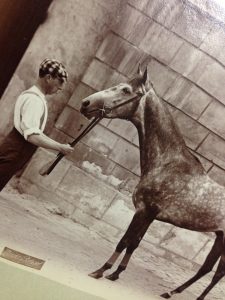
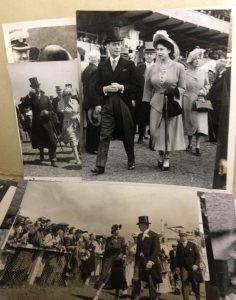
X.L.: If you have been able to access the archives, which piece or document do you personally prefer or which does surprise you?
Ph. A. This letter from Himmler confiscating the horse Pizzicato from a great racing stable owner in July 1942 and sending him to deportation. Unique, rare documents that testify that horses are spared nothing in times of war. There is also the illustrated turf of Caza, dated 1942. It is a document of gre
at value because it is dedicated by Caza “To René Romanet-Riondet”, all the owners and breeders meet in Deauville on the racecourse to encourage and celebrate the winner of the Grand Prix.
There is also Roger Chastel for the Essay of complementary colors, dressed by the house of P., plate taken from Le Trust des Perles 1921, an enhanced stencil, Donation Isabel and Louis Romanet. Both a painter of the School of Paris and a caricaturist, Roger Chastel also created theatre sets and costumes for the Gobelins between the two wars. As a painter, he exhibited both in France and abroad. In 1921, he produced two satirical albums about the regulars of the Casino de Deauville, the Trust des Perles, and, in collaboration with Pierre Mourgue, Eh bien, dansez maintenant! This plate depicts the famous couturier Paul Poiret, Coco Chanel's great rival. Roger Chastel took up this caricature of P. Poiret in 1924 in the magazine Femina, in an article devoted to fashion.
It is always difficult to affirm preferences but we will of course have some nuggets: caricatures of Sem, Peb, Don, Siss, postcards of a famous donor from the world of horses, photographs of races from all over the world, plans of racecourses, monographs etc.
Propos recueillis par Xavier Libbrecht
